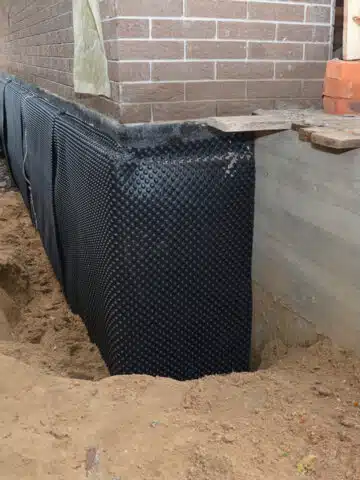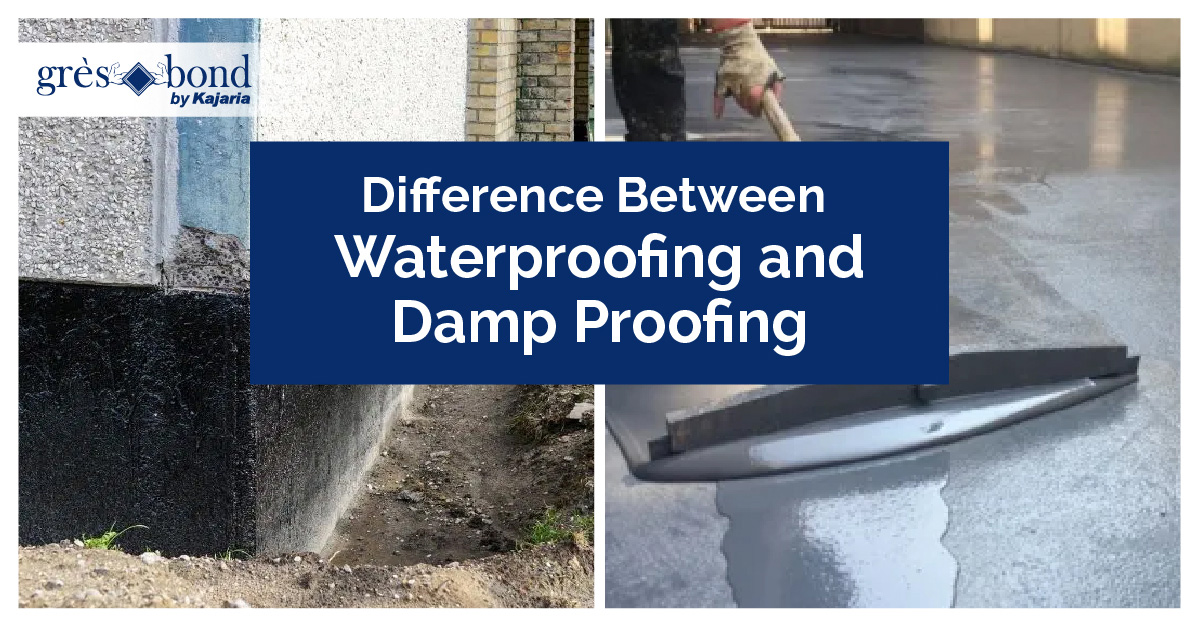Fighting indoor moisture through mould removal newcastle: What really works?
Wiki Article
Exploring the Various Techniques and Solutions for Effective Damp Proofing
Moisture in structures postures substantial obstacles to both architectural integrity and interior air high quality. Different methods and options have arised to battle this pervasive problem. From conventional damp-proof membranes to innovative chemical treatments, each approach supplies one-of-a-kind benefits. Recognizing these choices is important for effective wetness control. Choosing the right remedy depends on certain building problems and demands, motivating more expedition into the most reliable moist proofing techniques readily available.Recognizing the Reasons of Wetness
Although moisture can develop from different sources, recognizing these causes is crucial for efficient remediation. Frequently, dampness originates from three primary sources: climbing moist, penetrating moist, and condensation. Climbing moist happens when groundwater takes a trip up-wards through permeable materials, such as brick or rock, typically due to a lack of an efficient obstacle (mould removal newcastle). Passing through moist is generally triggered by exterior elements, consisting of roofing system leaks, damaged rain gutters, or harmed wall surfaces, allowing water to infiltrate a property. Condensation, on the other hand, arises from excess moisture in the air, typically intensified by inadequate air flow and temperature differences, causing water beads creating on surface areas. Identifying these underlying problems is necessary, as each kind of wetness calls for a tailored strategy for remediation. Appropriate evaluation assists in figuring out the most reliable remedies, inevitably safeguarding the architectural honesty of a building and improving indoor air high qualityStandard Damp-Proof Membranes

Chemical Damp-Proofing Solutions
Chemical damp-proofing remedies supply an innovative approach to avoid moisture intrusion in structures. These methods generally involve the application of liquid chemicals that penetrate stonework and create an obstacle against rising damp. Commonly made use of chemicals consist of silanes, siloxanes, and various other water-repellent agents that react with surface area products to create a hydrophobic layer.The application process generally calls for boring holes right into the wall surfaces, injecting the chemical solution, and permitting it to heal. This approach is especially advantageous for older frameworks where standard damp-proof membranes might be unwise. Chemical damp-proofing can be less turbulent and more cost-efficient than considerable remodelling projects.While effective, these remedies depend on appropriate application and ecological conditions for peak efficiency. damp proofing newcastle. Routine upkeep and monitoring are important to guarantee the long life of the damp-proofing treatment. On the whole, chemical damp-proofing represents a flexible option for guarding buildings against moisture-related damagesCavity Wall Building And Construction Techniques
Dental caries wall surface building and construction techniques use numerous advantages, especially in dampness control and energy effectiveness. By including an air space in between 2 layers of stonework, these walls successfully minimize water ingress while boosting insulation. This combination not only secures frameworks from wetness but additionally adds to reduced power usage.Benefits of Tooth Cavity Walls
When taking into consideration reliable wet proofing methods, the advantages of tooth cavity wall surfaces attract attention prominently. Tooth cavity walls contain 2 different layers, creating an air gap that successfully lowers wetness infiltration. This layout minimizes the risk of dampness, as the outer wall surface acts as an obstacle versus rainfall and water access. In addition, dental caries wall surfaces boost thermal insulation, which adds to power effectiveness by minimizing warm loss. They likewise supply sound insulation, assisting to create a quieter indoor setting. The air void permits for ventilation, which aids in moisture control and lowers the probability of mold growth. These benefits not only improve the overall convenience of a building but additionally add to its longevity and architectural honesty.Dampness Control Approaches
Reliable moisture control approaches are important in dental caries wall surface construction to guarantee lasting security versus dampness. One key technique entails the consolidation of weep openings, which help with water drain from the cavity, stopping buildup. Additionally, the use of breathable membrane layers can aid manage wetness degrees while allowing caught vapor to run away. Proper positioning of insulation is also important, as it should not obstruct drain courses. Furthermore, making sure that the external fallen leaves of the cavity wall surface are constructed with water-resistant products boosts total sturdiness. Regular upkeep checks are vital to recognize any blockages or damage early, protecting the structure's stability. Ultimately, a mix of these methods develops a robust protection versus moisture intrusion in cavity walls.
Insulation and Power Efficiency
Insulation plays a vital duty in boosting power efficiency within cavity wall surface construction. By integrating insulating materials, these wall surfaces create a thermal obstacle that decreases warm loss and minimizes energy consumption. Efficient insulation not only helps preserve a steady interior temperature however likewise reduces the threat of dampness, as it avoids condensation within the wall surface dental caries. Various strategies, such as the usage of stiff foam boards or mineral wool, can be used to achieve optimal insulation efficiency. Furthermore, correct setup is vital to assure that spaces and spaces are reduced, which can or else endanger energy performance. Eventually, a well-insulated cavity wall adds substantially to general sustainability and lowers home heating and cooling prices for house owners.Outside Damp Proofing Techniques
Exterior damp proofing methods are crucial for securing structures from wetness infiltration. 2 efficient techniques consist of the application of waterproof membranes and the installment of French drains. These solutions help minimize water build-up and preserve the honesty of buildings.Waterproof Membrane Application
While numerous methods exist for protecting against moisture ingress, the application of water-proof membranes continues to be a highly efficient external damp proofing method. These membrane layers are generally made Full Report from products such as polyethylene, rubber, or changed bitumen, giving a durable obstacle versus water penetration. The setup procedure involves using the membrane layer to the exterior surfaces of structures or wall surfaces, ensuring total insurance coverage to stop leaks. Appropriate attachment and securing at joints are crucial to taking full advantage of performance. Waterproof membranes can be applied in numerous kinds, consisting of fluid coverings and sheet membranes, permitting versatility based upon the certain demands of the framework. This approach not just shields structures from wetness yet additionally boosts their long life and architectural integrity.French Drain Setup
One effective method for managing groundwater and avoiding moisture accumulation around a building's foundation is the setup of a French drain. This drainage system consists of a trench full of crushed rock and a perforated pipeline that redirects surface area water far from the structure. Correct installment needs cautious planning, ensuring that the drainpipe inclines away from the structure to facilitate perfect water flow. In addition, the place of the drain is vital; it needs to be placed in areas prone to pooling or excess moisture. Normal upkeep, including clearing up particles from the crushed rock and making sure the pipe remains unobstructed, is important for long-term performance. Eventually, a well-installed French drainpipe can substantially minimize the risk of water-related concerns in structures and basements.Inside Waterproofing Techniques
Inside waterproofing methods are vital for shielding a building's inside from dampness seepage and possible water damage. These strategies commonly include the application of customized materials and strategies developed to create a dampness barrier within the framework. One common technique is making use of waterproof coatings or sealers on walls and floorings, which prevent dampness from penetrating surfaces.Additionally, setting up indoor drain systems, such as sump pumps, can effectively take care of water build-up in basements and creep spaces. One more approach involves making use of vapor obstacles, which are mounted to inhibit dampness motion Full Report from the ground right into living spaces.Moreover, addressing any type of splits or voids in walls or foundations with proper sealers guarantees a detailed protection versus water breach. By executing these indoor waterproofing approaches, homeowner can significantly decrease the threat of mold growth, architectural damages, and various other moisture-related concerns. Correct implementation of these techniques is important for long-lasting security and structure stability.Routine Upkeep and Assessment Practices
Normal upkeep and examination techniques are vital for guaranteeing the long-term effectiveness of damp proofing solutions in any building. Regular checks make it possible for property owners to recognize very early indicators of wetness invasion, such as peeling off paint, mold growth, and stuffy smells. These indications can signify underlying problems that need immediate attention.Inspections should be conducted at the very least each year, concentrating on at risk locations like basements, crawl rooms, and outside walls. During these analyses, building proprietors must take a look at sealants, drainage systems, and air flow to confirm they function correctly.Additionally, keeping downspouts and gutters is essential, as clogged up systems can result in water accumulation near the foundation. Applying a routine maintenance timetable, together with prompt repair services, can considerably prolong the life expectancy of wet proofing procedures and protect the architectural integrity of the structure. Proactive actions eventually add to the general health and wellness of the living atmosphere.Regularly Asked Questions
How Much Time Does Damp Proofing Usually Last?
The duration of wet proofing performance varies, commonly lasting between 20 to half a century. Factors such as application high quality, ecological conditions, and upkeep techniques significantly affect the durability of the wet proofing treatment.
Can I Damp Proof My Home Myself?
The specific contemplated the feasibility of do it yourself damp proofing. With correct research study and the best materials, it is feasible. They likewise recognized the relevance of expert guidance to assure lasting effectiveness and prevent future problems.What Are the Signs of Inadequate Damp Proofing?
Indications of ineffective moist proofing include consistent mildewy odors, noticeable mold and mildew development, peeling paint, moist patches on walls, and timber decay - mould removal newcastle. Homeowners must address these problems quickly to stop further damage and wellness issuesDoes Damp Proofing Affect Indoor Air Top Quality?

How Much Does Specialist Damp Proofing Expense?
Professional wet proofing expenses vary considerably, typically varying from $1,000 to $5,000 depending upon the home's size, the level of the moist issue, and picked methods. Each scenario needs a tailored evaluation for accurate pricing. Frequently, dampness stems from three key sources: climbing damp, passing through moist, and condensation. When taking into consideration efficient wet proofing techniques, the advantages of tooth cavity walls stand out plainly. Exterior moist proofing approaches are vital for protecting structures from dampness infiltration. While different methods exist for avoiding moisture ingress, the Website application of water-proof membranes stays a very effective outside wet proofing technique. Indicators of ineffective damp proofing consist of relentless mildewy odors, visible mold development, peeling paint, moist spots on wall surfaces, and wood decay.Report this wiki page